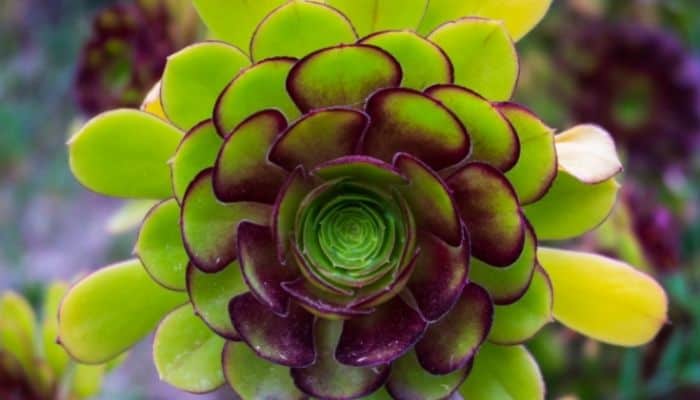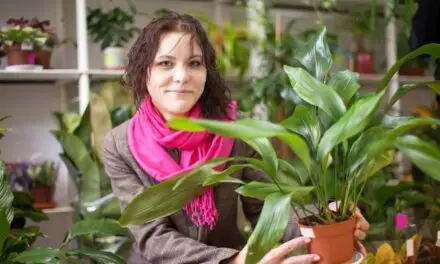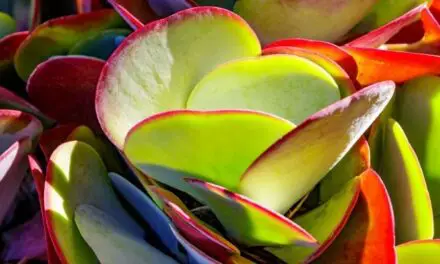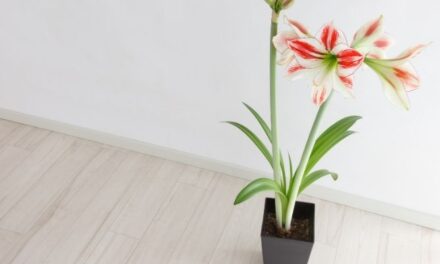Succulents truly are beautiful plants.
A vertical rack of them on the patio can add an amazing, colorful aesthetic that melds nature and civilization into a delightful synergy.
Although there is a slight learning curve, raising succulents is not too difficult.
But if certain elements of care miss the mark, it can sometimes result in your Jade plant turning from a green to purple color.
Table of Contents
Why Is My Jade Plant Turning Purple?

The purple you are seeing on your Jade plant is a pigment known as anthocyanin and the main reason it is produced is to protect the succulent from too much sunlight or unfavorable temperatures.
Also, if your variety of succulent is a small-leaf Jade, it is more prone to turning purple than regular Jade plants.
In this article, we’ll explore all of the reasons that your Jade plant might be producing this pigment so that you can check them off and nurture your little Jade succulent back to a healthy green.
Without further ado, let’s discuss the causes of that purple pigment.
Overwatering
Overwatering can cause a purple Jade plant.
Succulents are very sensitive to overwatering, as they are designed for much warmer climes where water is often in shortage.
You’ll sometimes see yellowing of leaves, as well, as a symptom of overwatering.
While they do need more water in Spring and Summer, whenever you are watering a succulent you want to be sparing about it.
Your Jade plant can store a lot of water in its thick leaves so it is best to let the soil dry out between watering times.
Test the soil with your finger and only give water when the top 1 or 2 inches of soil has become dry.
If you feel any moisture within the soil, hold off for a couple of days before watering and test the soil again for dryness.
When the top 1 or 2 inches of soil has dried out, give your plant’s soil a good soaking with water.
Make sure it is in a pot with some drainage holes and that the plant itself gets thoroughly soaked, but don’t let it sit in a pool of water.
Always make sure water can drain away from your Jade plant’s roots.
Aside from causing your plant to rot, too much water may attract pests and diseases, and you don’t want that.
Related Article: Why Do My Succulents Look Dusty? (Explained)
Underwatering
Underwatering is also bad and can lead to a Jade plant turning purple.
A well-watered succulent should have Juicy and plump leaves.
If you’ve got a purple Jade plant and the leaves are looking a bit thin and shriveled, then you might be underwatering the plant.
This can also activate that defensive purple hue.
Test the top couple of inches of soil around your plant with your finger and if it feels completely dry then it’s time to give your plant a good watering.
Temperature Is Important
Jade plants don’t like the cold and freezing temperatures may well kill them.
That’s why it’s important to bring them in when the months start to get colder so that you may protect your plant.
If you just brought the Jade plant home, the purple color may also be a response to the sudden change in temperature.
Your plant may originally have been kept in optimum conditions in a greenhouse.
Then, when you take it home, it’s not quite as warm and bright as the plant is used to.
This can cause your Jade plant to experience stress and begin turning purple.
If this is the case, the issue should clear up in a few days, provided you don’t have it placed somewhere that is too cold.
Also, try to keep it away from drafty doors and windows.
Jade plants are happiest at temperatures between 65 and 75 degrees Fahrenheit and they don’t like any sudden temperature change.
It Could Be The Soil
Jade plants and other succulents are not going to do well in regular potting soil.
It’s simply too dense for them and this can stress them and turn them purple quickly.
They thrive in soil that has additional organic matter and you can purchase special soil for succulents for the best results.
The main reason that standard soil just doesn’t cut it is that your succulent needs to have soil that drains easily.
Regular potting soil is going to hold too much water for your desert beauty to thrive and so this is an unsuitable medium for growing in.
Succulents need the roots to be able to dry out soon after watering.
Any quality pre-bagged cactus or succulent potting mix will work great for your Jade plant.
Miracle-Gro or Black Gold cactus mixes work well.
Fertilization Can Help Stop Your Jade Plant Turning Purple
Aside from ensuring that they have the right kind of soil, you’ll also want to fertilize your Jade plant every 1 to 2 months during the growing season (early spring until early fall).
Don’t ever fertilize your Jade during the winter, as they do not grow at this time and it can be harmful to your plant.
Excessive Sunlight
Too much sunlight can also be an issue.
Jade plants require a little less sunlight than most other succulents.
While they are desert plants, your Jade can get too much sunlight.
If you live in a region that has particularly harsh summers then this is a possibility to consider.
That said, it’s the least likely possibility for your Jade plant to turn purple but if you’ve ruled everything else out on this list then try moving your jade plant to a spot that gets less full sun.
The optimal place for your Jade will be an area that receives a good amount of sunlight but does have some periods of shade or dappled light.
This way your Jade isn’t constantly exposed from dawn until dusk.
If keeping your plant indoors remember it should get at least 4 hours of direct sunlight every day.
Young jade plants should be kept mostly in bright indirect sunlight.
However, larger, more mature jade plants can take a bit more direct morning and winter sunlight (just not roasting summer sun).
In the home or office, south or west-facing windows are usually the best locations for your Jade plant.
Bright, indirect sunlight will still make your plant happy and it should grow just fine, so this is one last thing to try if you’ve got a purple plant.
Final Thoughts
Purpling on your Jade plant is not a sign that the plant is dying or even unhealthy.
Many people intentionally stress their succulents just to bring out these colors.
These plants can be prone to turning a bit purple (Especially small leaf Jades).
I hope that this article has helped you to narrow down the cause of the purple pigment in your plant.
Taking care of succulents is a joy, but as we’ve said, in the beginning, there is a bit of a learning curve.
But once you get the basics down, it’s is a cinch.
Just be sure to test each of these tips and before you know it your Jade plant should get back to being green and happy.
Be patient, it’s going to be okay!




